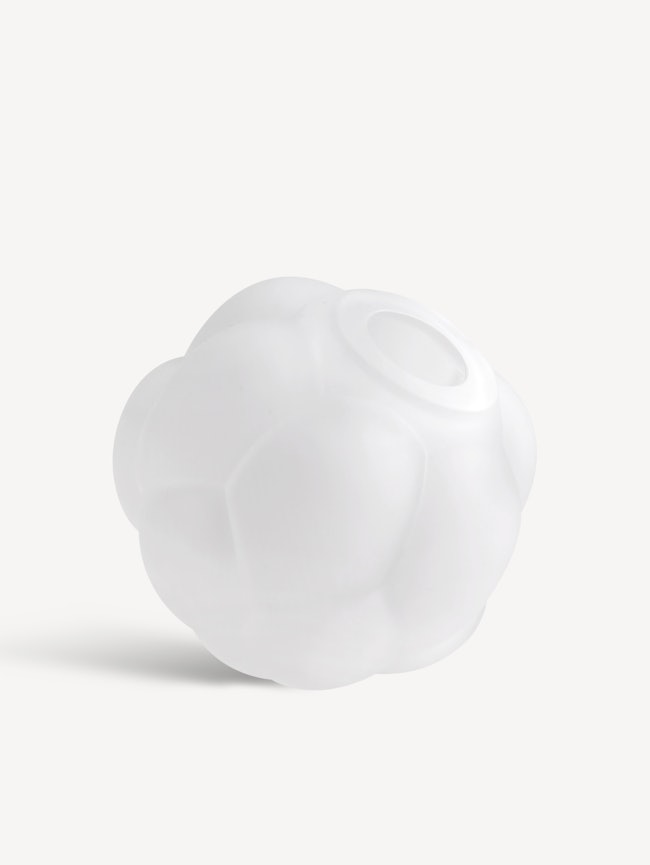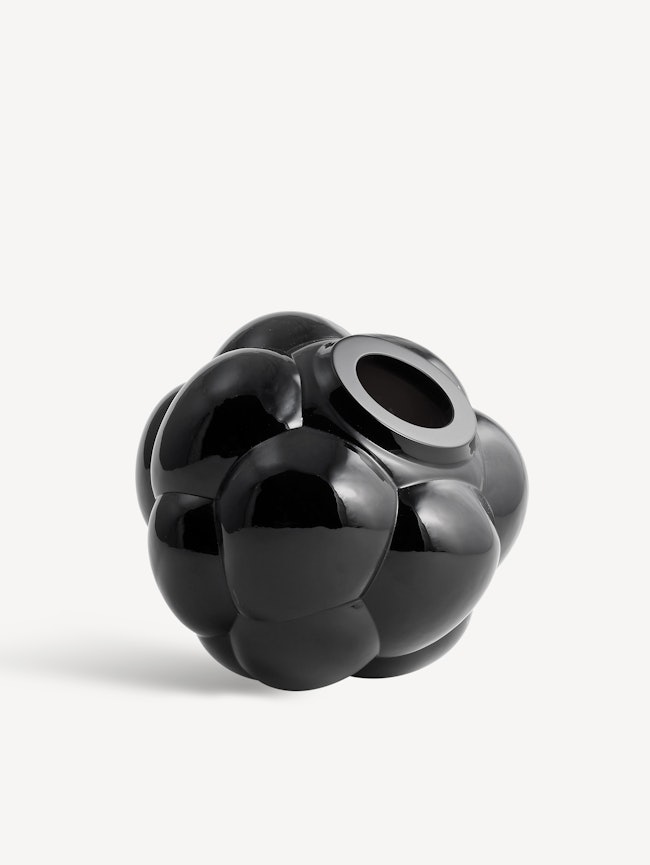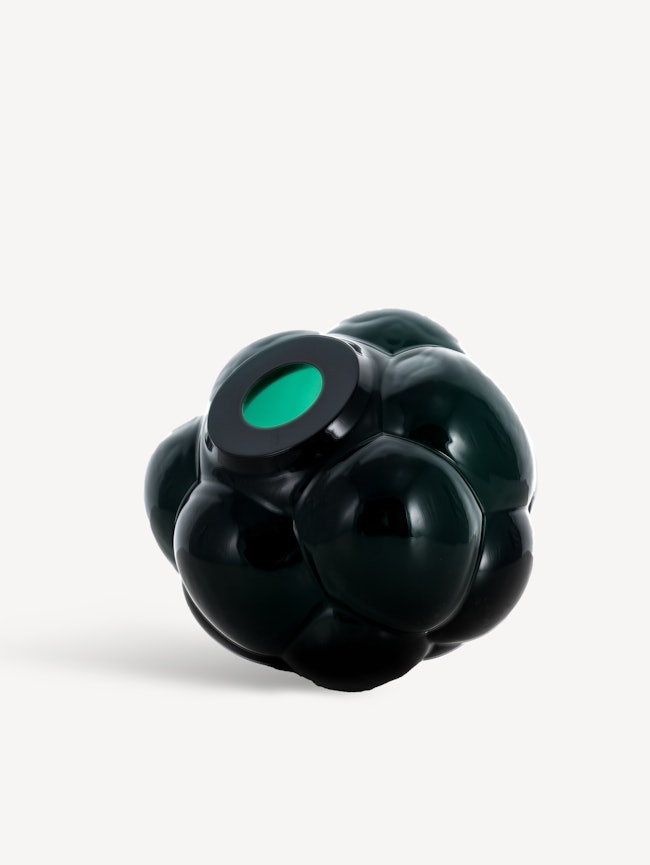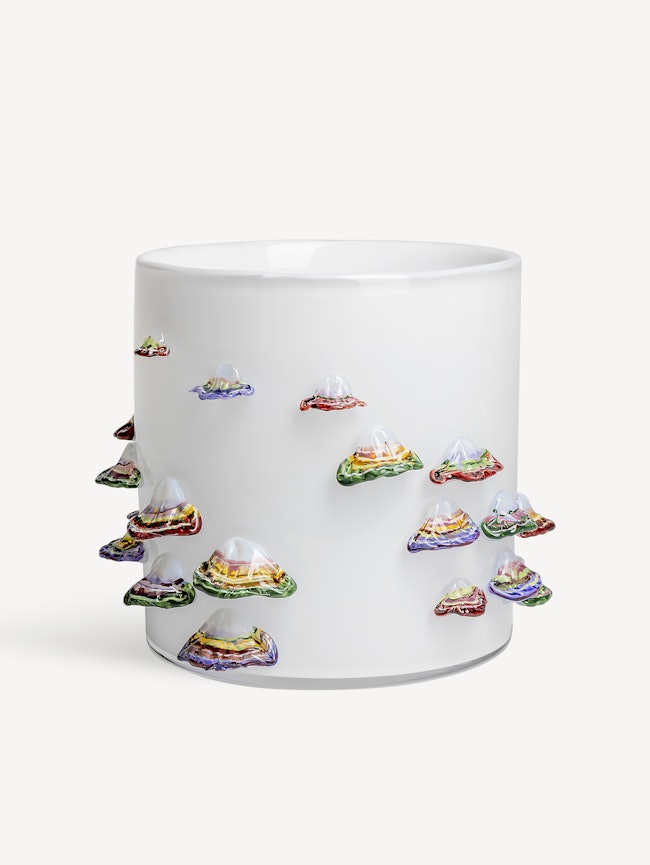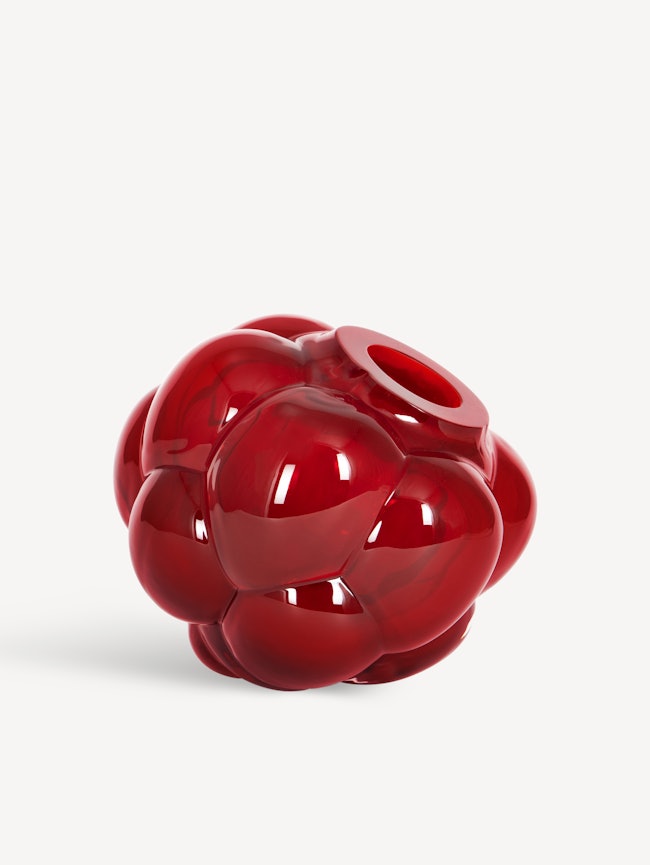Ellen Ehk Åkesson - Artist
Concepts such as searching for one’s roots and starting where you are may seem like cliches, but they are deeply relevant when it comes to describing the artistic work of Ellen Ehk Åkesson. Ellen was born in Småland, where she still lives today – now with her family in Nybro, in the heart of the Kingdom of Crystal. She works in a studio in Pukeberg’s old glassworks where her husband, artist Markus Åkesson, who is also associated with Kosta Boda, has a studio as well. With Småland as a base, Ellen has exhibited all over the world. Her work is represented in galleries in Stockholm, Paris, and elsewhere in Europe, as well as in many collections in Asia, where her work is shown regularly.
Ellen Ehk Åkesson’s childhood home was situated at the edge of an old-growth forest, which was her second home from as early as she can remember – her playground, school, and endless source of inspiration for the artistry she developed at a young age.
“If I had grown up in the city or by the sea, my art would have been entirely different,” says Ellen. “The forest was my stage for life. I never felt like I was visiting the forest. I was a part of it and I always felt safe there, even in the dark. I escaped to the forest when I was angry or sad. That was where I had my trees and my stones, which gave me solace and support, and never questioned me. We’ve lived here for generations. It was the same forest that my mother and her father played in, which added depth to the context. When they cut the whole forest down, it was catastrophic for me. The trees, stones, trails – all of it disappeared. It is impossible to describe in words. My love for the woods, and my sorrow, are what I return to the most in my art. I’m building my own forest from memories that no one can take away from me.”
From Ellen Ehk Åkesson’s earliest childhood memories, she has been deeply fascinated by, and has studied in detail all of the patterns, color palettes and brilliant interacting plant systems of the forest. “Caves, giant boulders and crooked old trees are like extras in my games,” as she puts it. “I was also frequently in touch with older relatives and others – through them, I had access to all the stories and tales of the forest.”
She has always been particularly captivated by mushrooms, which are a continuous source of inspiration in her work – this mystical life form, neither plant nor animal, which is utterly essential to the organization and decomposition of life.
Ellen Ehk Åkesson studied ceramics at the School of Design and Crafts at the University of Gothenburg (HDK) in the early 2000s. At that time, an arduous process was underway for handicrafts. Interest in handicrafts in the art world was still low. The line between art and crafts was impermeable prior to the handicraft renaissance of the past decade, during which the boundary has dissolved. Conceptual art was the ideal of the time and Ellen Ehk Åkesson struggled to have her artistic view understood. In addition to nature, she could be equally inspired by Chinese bowls as by Gustav Fjaestad’s paintings and handicrafts, Munch’s drawings, and more modern art by Ron Nagle, Cy Twombly and Louise Bourgoise. Fortunately, teacher and ceramicist Kennet Williamsson encouraged her to ignore the division between art and crafts. He was the supervisor for her degree project, a hand-thrown porcelain set – which was not at all in step with the times.
The set was the introduction to Ellen’s path as a ceramic artist, in which she arranged vessels into a still life. “But I wanted to express myself more personally. It was hard to compete with the thousand-year-old narratives of the vessels. So after a decade of throwing, I transitioned to sculpture and also began working with public art. That gave me the chance to scale up the format and to explore new material.”
Ellen Ehk Åkesson’s acclaimed and popular public artworks include her sculptures outside of the School of Police Studies at Södertörn University as well as her bronze throne of nature in the forest by the beach in Gröndal, both in Stockholm.
As she puts it, Ellen had “sniffed around glass” during her work as a ceramic artist when she was awarded the first Ulrica Hydman Vallien scholarship in 2019. The award included a generous amount of time in the studio at Kosta Glassworks, where she could experiment with glass as a new primary material in her art. Now, together with her husband and colleague Markus Åkesson, she has a studio in Kosta in addition to the one in Pukeberg.
“It was an incredible luxury to have time to freely experiment like that, for a long time, without pressure. I incorporated elements from ceramics, different finishes and shapes, and explored how the qualities of glass changed the look. At first I was frustrated by not being able to touch the glass, given how accustomed I was to doing everything myself with my hands. Then I found a technique in which I filled wooden molds with clay and sculpted negative molds. This has worked brilliantly, and it’s enabled me to size up the format and control the shape. I am only just beginning to explore the possibilities of glass.”
Products
11 Products











